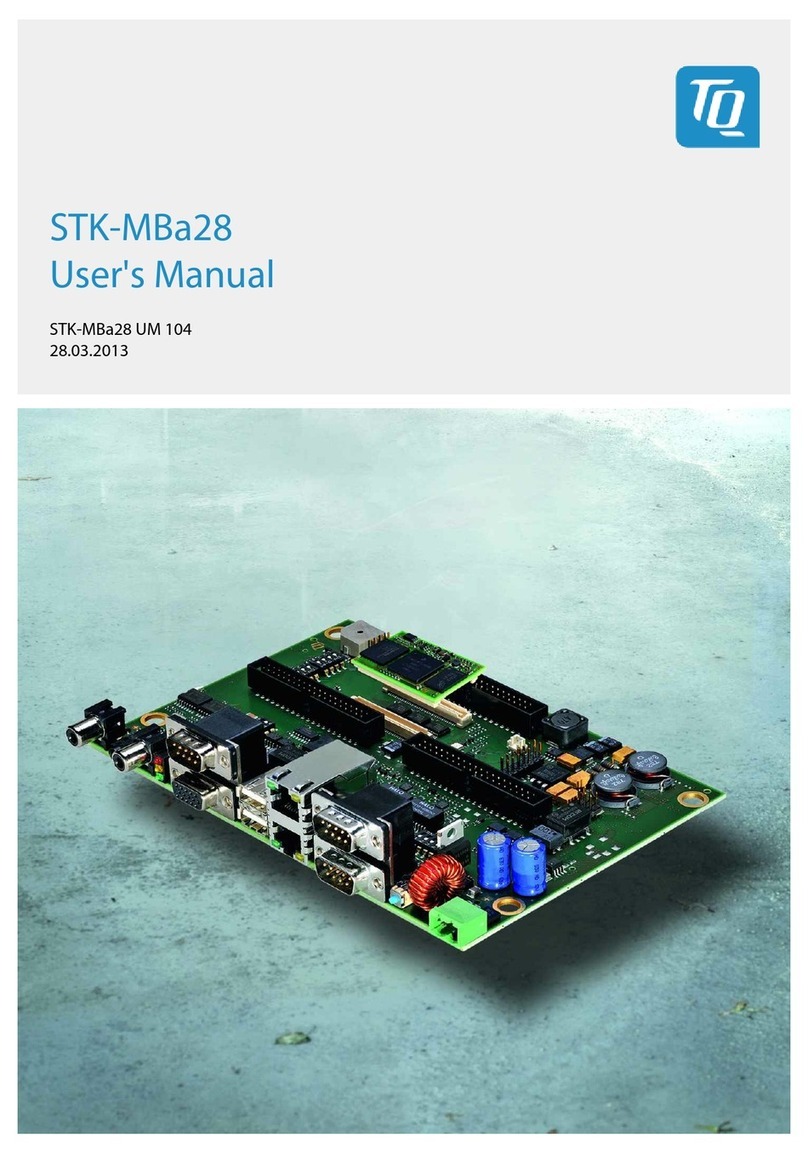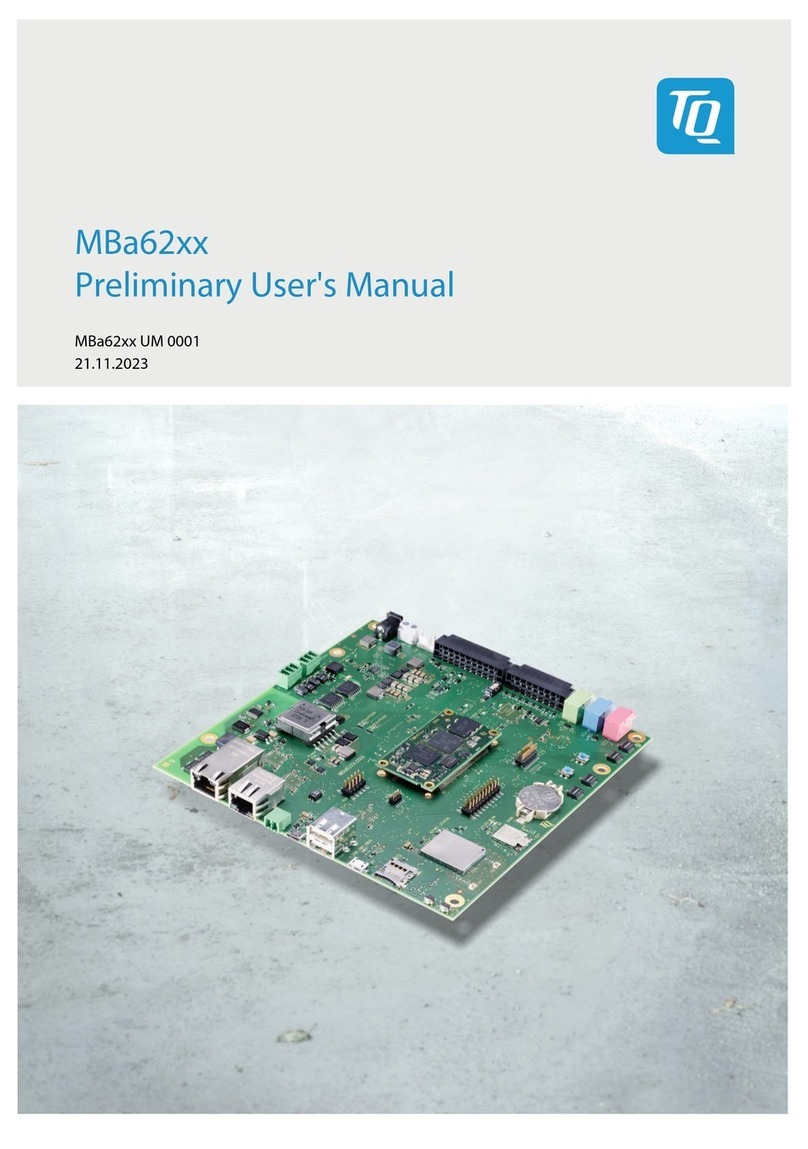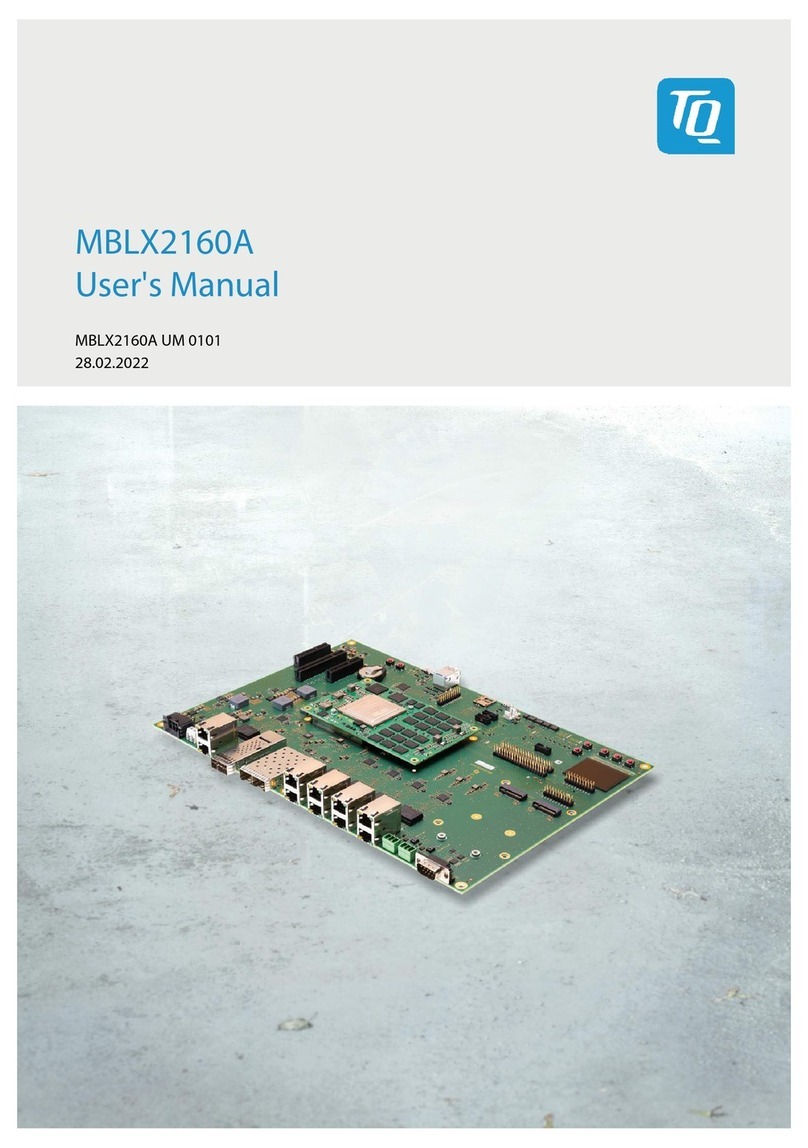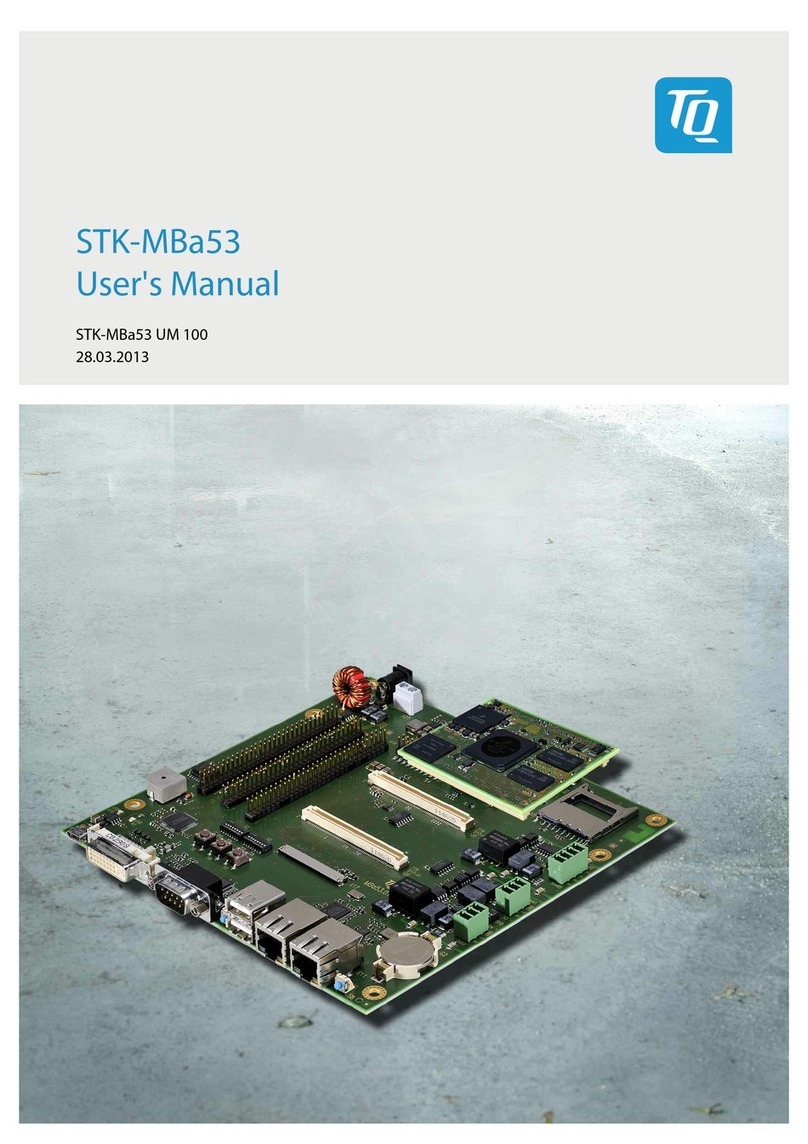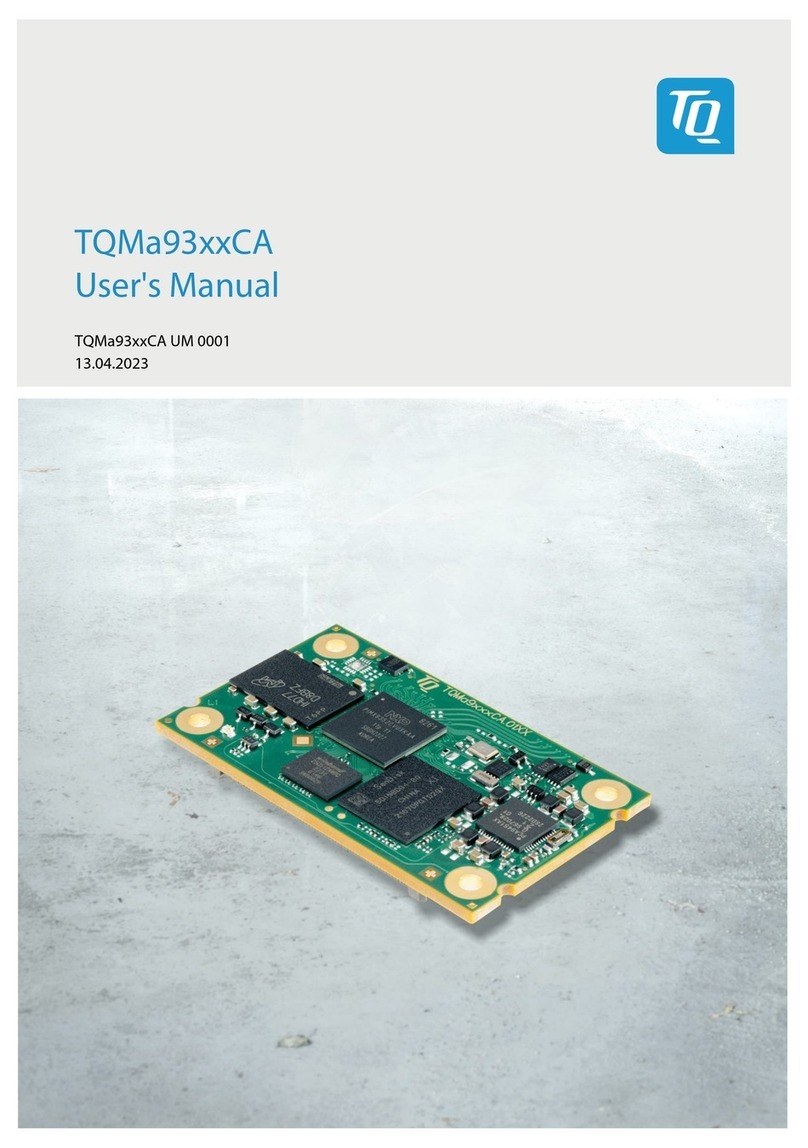
User's Manual l TQMa6x & TQMa6xP UM 0403 l © 2019, TQ-Systems GmbH Page i
TABLE OF CONTENTS
1. ABOUT THIS MANUAL ........................................................................................................................................................................1
1.1 Copyright and license expenses .....................................................................................................................................................1
1.2 Registered trademarks.......................................................................................................................................................................1
1.3 Disclaimer...............................................................................................................................................................................................1
1.4 Imprint.....................................................................................................................................................................................................1
1.5 Tips on safety ........................................................................................................................................................................................2
1.6 Symbols and typographic conventions........................................................................................................................................2
1.7 Handling and ESD tips........................................................................................................................................................................2
1.8 Naming of signals ................................................................................................................................................................................3
1.9 Further applicable documents / presumed knowledge..........................................................................................................3
2. BRIEF DESCRIPTION.............................................................................................................................................................................4
2.1 Key functions and characteristics ...................................................................................................................................................4
3. ELECTRONICS ........................................................................................................................................................................................4
3.1 System overview..................................................................................................................................................................................4
3.1.1 System architecture / block diagram.............................................................................................................................................4
3.1.2 Functionality .........................................................................................................................................................................................5
3.2 System components...........................................................................................................................................................................6
3.2.1 i.MX6........................................................................................................................................................................................................6
3.2.1.1 i.MX6 derivatives..................................................................................................................................................................................6
3.2.1.2 eFUSEs.....................................................................................................................................................................................................6
3.2.1.3 i.MX6 errata............................................................................................................................................................................................6
3.2.1.4 Boot modes............................................................................................................................................................................................7
3.2.1.5 Boot configuration ..............................................................................................................................................................................8
3.2.1.6 Boot interfaces......................................................................................................................................................................................9
3.2.1.7 Boot device eMMC ..............................................................................................................................................................................9
3.2.1.8 Boot device SPI NOR flash.............................................................................................................................................................. 10
3.2.1.9 Boot device SD card......................................................................................................................................................................... 11
3.2.2 Memory................................................................................................................................................................................................ 12
3.2.2.1 DDR3L SDRAM ................................................................................................................................................................................... 12
3.2.2.2 eMMC NAND flash............................................................................................................................................................................ 13
3.2.2.3 SPI NOR flash...................................................................................................................................................................................... 13
3.2.2.4 EEPROM ............................................................................................................................................................................................... 14
3.2.3 RTC......................................................................................................................................................................................................... 15
3.2.4 Temperature sensor......................................................................................................................................................................... 15
3.2.5 Interfaces............................................................................................................................................................................................. 16
3.2.5.1 Overview.............................................................................................................................................................................................. 16
3.2.5.2 AUDMUX.............................................................................................................................................................................................. 17
3.2.5.3 CCM....................................................................................................................................................................................................... 17
3.2.5.4 ECSPI..................................................................................................................................................................................................... 17
3.2.5.5 ENET...................................................................................................................................................................................................... 18
3.2.5.6 FLEXCAN.............................................................................................................................................................................................. 20
3.2.5.7 GPIO ...................................................................................................................................................................................................... 20
3.2.5.8 HDMI..................................................................................................................................................................................................... 21
3.2.5.9 I2C........................................................................................................................................................................................................... 21
3.2.5.10 I2C / ENET-Patch Variants................................................................................................................................................................ 22
3.2.5.11 IPU ......................................................................................................................................................................................................... 23
3.2.5.12 LDB ........................................................................................................................................................................................................ 24
3.2.5.13 MIPI_CSI............................................................................................................................................................................................... 25
3.2.5.14 MIPI_DSI............................................................................................................................................................................................... 25
3.2.5.15 MLB ....................................................................................................................................................................................................... 25
3.2.5.16 PCIe ....................................................................................................................................................................................................... 26
3.2.5.17 PWM...................................................................................................................................................................................................... 26
3.2.5.18 SATA...................................................................................................................................................................................................... 26
3.2.5.19 SJC ......................................................................................................................................................................................................... 27
3.2.5.20 S/PDIF................................................................................................................................................................................................... 27






